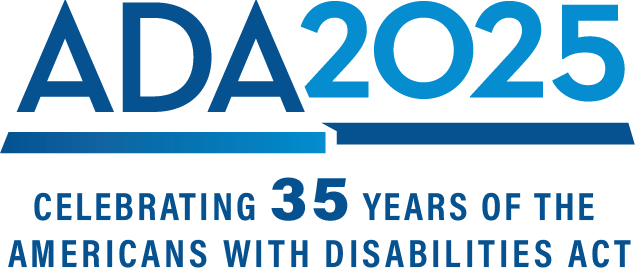Arts and entertainment help us learn about each other and the human experience.
Various studies have demonstrated how art can positively impact education, health, and local economies. An example of art’s impact on a community can be seen in the movement toward creative placemaking, which integrates arts, design, and culture into community planning. Creative placemaking seeks to address the social determinants of health and transform communities into lively, beautiful, and resilient places with the arts at their core.
For everyone to benefit from the positive effects of the arts, it must be accessible to and inclusive of people with disabilities.
Promoting accessible art
The ACL-funded Tarjan Center is home to the California Arts and Disability Resource Center, which promotes the inclusion of audiences and artists with disabilities in all facets of the arts community. Through information, technical assistance, training, and evaluation services, NADC aims to strengthen the capacity of the mainstream arts community to include artists and audiences with disabilities. NADC also supports the professional development of artists with disabilities.
Many museums and artists are working to make art more inclusive by providing accessible programming and features. Design for Accessibility: A Cultural Administrator’s Handbook is a resource developed by various organizations, including the National Endowment for the Arts and the National Assembly of State Arts Agencies, that helps arts organizations comply with laws — including the ADA — and incorporate access as an integral part of their planning, mission, programs, outreach, meetings, budget, and staffing.
Going beyond the visual
Some museums are enhancing visitors’ experiences by designing tours and exhibits that embrace flexibility and meet the needs of all people. For example, ACL’s National Institute on Disability, Independent Living, and Rehabilitation Research (NIDILRR) funded a Smithsonian project that used replicas of museum artifacts and other 3D objects that describe themselves when touched. The project is one of 19 small business innovation research projects involving touch graphics, resulting in several products now in the marketplace, including touch-responsive models for exhibits and displays, tactile tablet technology, tactile and audio-tactile maps, and wayfinding tools.
3D printing is also making art more accessible by creating touchable versions of art, especially famous pieces. Blind people and people with low vision, some of whom have never viewed works like the Mona Lisa or The Scream, can now feel their way through these iconic works. One company at the forefront is 3D Photoworks, which makes tactile versions of historic paintings and modern photography through 3D printing. The pieces created by 3D Photoworks also feature sensors, which activate audio descriptions of the work as a person feels around the piece.
Other artists are using 3D printing to make art accessible in other ways, including incorporating Braille in traditional art forms. New York-based artist Roy Nachum creates what he calls "visual art for the visually impaired." His art includes poetic writings embossed on the artwork's surface in Braille. To highlight the tactile importance of his work, Nachum also lightly covers his art in ash, which leaves fingerprint marks on the work as a person reads the Braille messages. The prints left behind act as a type of documentation of human contact with his work.
Andrew Myers uses an electric screwdriver to drill thousands of screws into pieces of plywood and paints the pieces to make 3-D masterpieces that can be appreciated by people who are blind and sighted alike. Myers was inspired to focus on creating what he calls “screw paintings” after witnessing a blind man being guided by a friend who was describing one of his sculptures at an art show while the man ran his fingertips across the piece.
Innovative forms of interactive art allow everyone to experience the same art in different — yet equally powerful — ways.
Representation on TV and in films
People with disabilities are also challenging the entertainment industry to be more inclusive of people with disabilities. The Annenberg School for Community and Journalism, University of Southern California, found that only 2.2% of all speaking characters in 2023's 100 top-grossing films had a disability.
When characters with disabilities do appear in film, the portrayals often perpetuate negative stereotypes about disability, and they are most often portrayed by actors without disabilities.
However, the entertainment industry is slowly becoming more inclusive of actors with disabilities, and films and shows are starting to include accurate and positive portrayals of people with disabilities.

